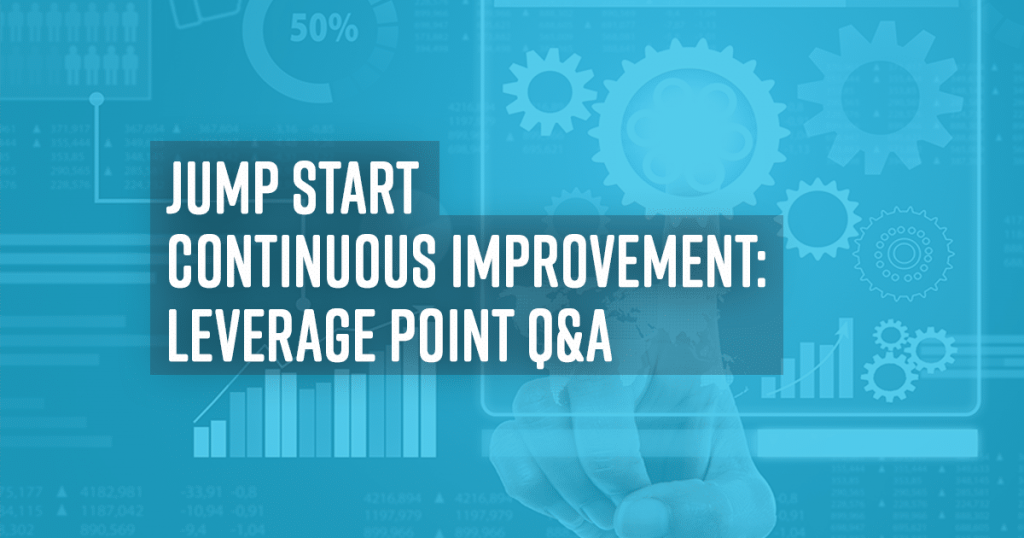In any manufacturing business it is always important to make sure production is at optimal levels. This does not mean you need to have a major overhaul of your process every time production decreases. Instead, making small adjustments as you go can yield comparable, if not better results. We asked Brent Wahba, President of Strategy Science Inc.; and Beau Keyte, President of Keyte Group three questions about their “Leverage Points” methodology for continuous improvement to better understand the versatility and impact it can have in an organization.
Question 1: What is the “Leverage Points’” methodology of Transformation & Continuous Improvement?
Leverage Points are “small, simple changes that greatly advance an organization’s success,” and the ultimate objectives are no different than other transformation methodologies. What is different, however, is the approach which is rooted in both complexity science and observations of hundreds of companies pursuing change. Simply put, the vast majority of the successful organizations only leveraged a few synergistic modifications of strategy, management processes, measurements or leadership behavior. The unsuccessful ones, however, either tried to do too much (simultaneously implementing too many tools / techniques / controls), did not address the complexity of their problems, or did not fix important social issues. This process is a simple means of uncovering and then experimentally proving the critical few changes that will drive desired results.
Question 2: What makes this system successful across different organizations with different processes and needs?
In traditional lean or sigma, we often get great frontline results in a single pilot work stream, but cannot expand because: 1) the rest of the organization is still overburdened, and 2) management processes and behaviors are parts of a larger problem. Instead of prescribing an overly-complicated one-size-fits-all operational model or elaborate management system, Leverage Points relies on the fact that every situation is different and therefore requires fewer, unique solutions. Managers in a targeted part of the organization are guided to uncover and socialize their specific business needs, to engage in creating experiments to test possible solutions, to implement and improve the changes, and then to expand the model. By taking this strategically-aligned top-down or middle-out approach, they can better focus the organization while dramatically improving future frontline improvements by removing roadblocks and preventing new waste. Other tools and techniques from any number of other disciplines are added to the solutions only as-needed, and there are no preconceptions about what is theoretically “correct” or not.
Question 3: When is “Leverage Points” transformation Methodology the right solution for a manufacturer and when is it not the right solution?
The real success rate of common change techniques or copying others’ solutions is pretty low, so if your organization is truly succeeding with its current change methodology, then please keep going, you do not need a disruption. But if you are not achieving your desired results, if changes are not well-aligned with strategy, if organizational behaviors are undermining improvement, or if any of the common methods are just not clicking with your culture, then you are a good candidate for Leverage Points. Trying this methodology is low risk, a comparatively low investment of resources, and does not need years of patience to prove out. It does require, however, commitment that your organization is willing to experiment with creating its own unique improvement path, wherever that may lead.
___________________________________________________________________________________________________
If you would like to learn more about Leverage Points and how it can positively affect an organization click the following link to watch previous webinars:

